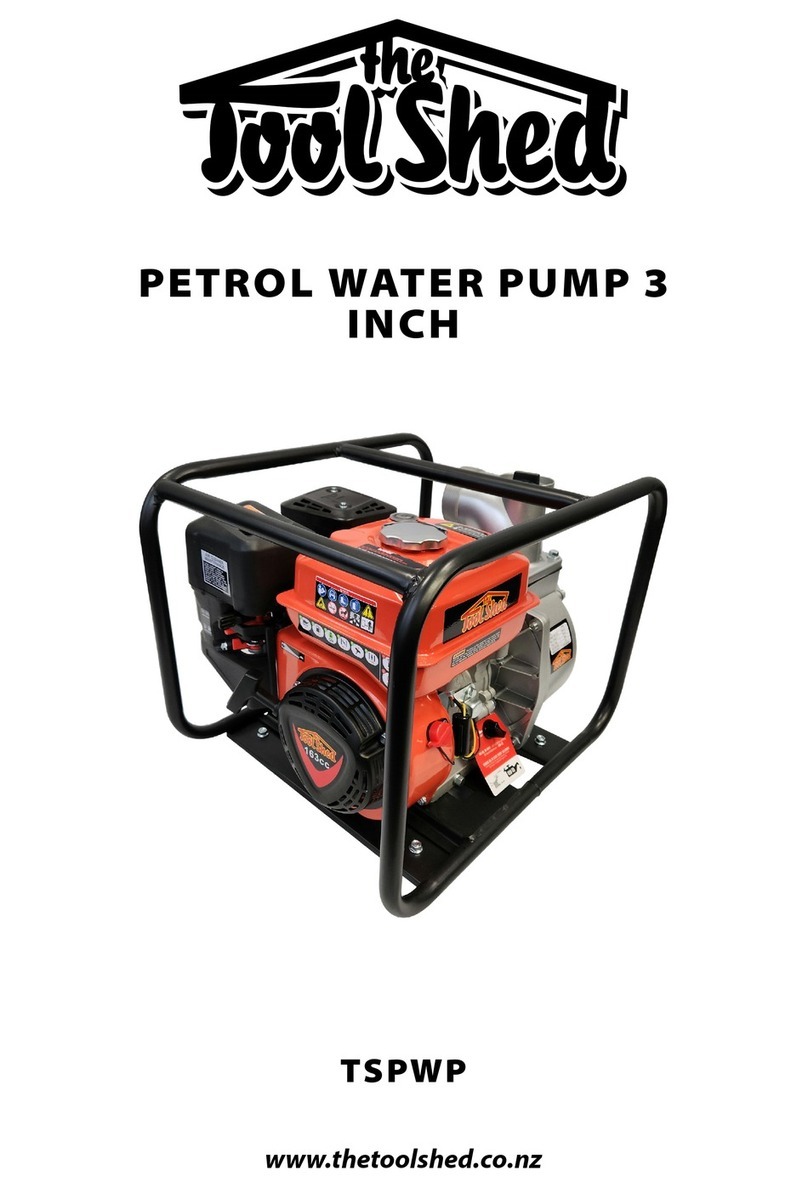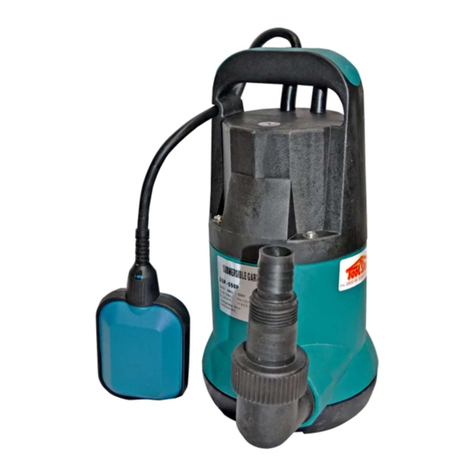
67
OPERATION MANUAL OPERATION MANUAL
WWW.THETOOLSHED.CO.NZWWW.THETOOLSHED.CO.NZ
SAFETY GUIDELINES SAFETY GUIDELINES
• The electrical connection must always be
made in a dry area. DO NOT allow the plug
outlet to get wet, water in the outlet can lead
to electric shock.
• Only use the power tool or machinery
when the plug correctly matches the
power outlet. Modifying plugs greatly
increases the risk of electric shock.
• Keep the power cord away from anything
that could damage it such as sharp edges,
moving parts or heat. A damaged power
cord increases the risk of electric shock.
• Only operate outdoors with the use of an
outdoor extension lead. Not all extension
leads are suited to outdoor use and using
one which is not can greatly increase the risk
of electric shock.
• Avoid body contact with grounded or
earthed surfaces. Surfaces such as radiators,
ranges, pipes, and refrigerators can increase
the risk of electric shock due to your body
being earthed or grounded.
• Never carry the power tool by the cord,
or yank the cable from the power outlet.
This can damage the internal wiring and may
become a hazard.
WARNING
Electric shock can cause serious injury
or, in some cases be fatal.
Electrical Safety
• Use the correct tool for the job. Forcing
a tool to do a job it was not designed for
increases the risk of accident or injury.
• Disconnect tools and machinery from
power, or remove batteries before doing
any maintenance or adjustments, or
before storing the tools and machinery.
This reduces or removes the risk of a power
connection that causes the tool or machinery
to accidentally re, which can help prevent
injury or accident.
• Check the general condition of the power
tool for damage or any problems that
could aect the way the tool or machine
works. An unrepaired tool or machine can
lead to accident and injury. Only have your
tool or machine repaired with genuine parts
from The ToolShed.
• Only use the power tool and machinery
with genuine parts or accessories that are
designed to be used with this power tool
and machinery. Failure to do so could result
in accident or injury or damage your tool or
machinery.
• Store your tool or machinery out of reach
of children, and away from untrained
personnel when not in use. Use by some-
body untrained, or a child, could lead to
accident or serious injury.
Power Tool & Machinery Use &
Care
• Always wear personal protective equip-
ment (PPE). Eye protection, ear protection,
dust masks, and other protective equipment
will help to reduce the risk of personal injury
or long-term illnesses.
• Dress appropriately. DO NOT wear loose
clothing that can get caught in moving
parts. Keep hair, loose clothing, jewellery,
and anything else that could be of risk, away
READ ALL SAFETY WARNINGS &
INSTRUCTIONS. Failure to follow
instructions and warnings could lead to
serious injury, electric shock, or re.
from moving parts in the machine, or they
could become caught therein.
• Always remain alert and DO NOT operate
power tools or machinery under the inu-
ence of any substances such as alcohol
or drugs, including prescription medica-
tions. Lack of focus could lead to injury or
accidents while operating these power tools
and machinery.
• Always ensure proper footing and
balance. Overreaching can lead to slipping
and falling which can result in injury or acci-
dent.
• Ensure the power switch is in the OFF
position before connecting any battery,
or power source to the power tool or
machinery. This can cause injury as tools
and machinery can suddenly re incidentally
when live, causing accidents.
• Use all provided dust collection and
extraction attachments, if included. This
equipment, along with the use of PPE dust
masks, can help keep you safe from dust, and
keep your work site clear from hazards.
• Ensure loose parts such as wrenches
or adjusting keys are removed before
starting the power tool or machinery.
WARNING
Work Area Safety
Personal Safety
• Ensure that your work area is kept clean
and well lit. Lack of visibility and clutter
greatly increase the risk of accident when
using tools.
• Keep bystanders, pets, and children
clear when operating this power tool or
machine. They can cause distraction or risk
injury to themselves.
• Ensure you are not operating the power
tool or machinery in the presence of dust,
liquids, ammable gases, or anything
that can create an explosive atmosphere.
Power tools and machinery can create sparks
which can lead to ignition and re hazards in
working environments.


























